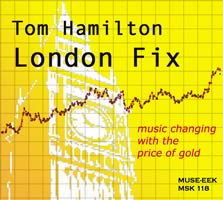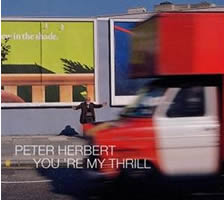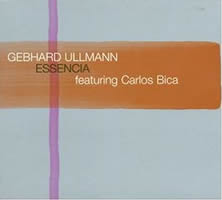Random Noise 5: Successful Trespass
|
[With our usual thanks to OnSoundandMusic.com for permission to post these Random Noise columns in La Folia. M.S.] Mike Silverton [January 2004.]
How does one jump-start the process? Time was, I wrote poetry. The urge to do a poem preceded any sense of what to say. Not a problem. As a would-be Surrealist, I coaxed lines into being via chance procedures similar to the exquisite corpses and automatic writing of the movement’s salad days. I mention my not terribly significant contributions to Kulchur only because a recent release, Muse-Eek MSK 118, calls the modus to mind. The utterly charming sound-world of Tom Hamilton’s London Fix, Music Changing with the Price of Gold traces its impetus to a neighbor’s computer with its “colorful stock charts,” specifically “the contours of the spot gold market as defined by the twice-daily London Fix. [Hamilton] used the 12 monthly price charts of 2002 to animate an electronic pitch-making system of [his] own design .” There’s more to it than that, of course, for which see the composer’s CD note below. We’re all sophisticates here. Surely nobody’s put off by my referring to Hamilton’s scheme as valid grounds for music-making. What is music after all but sounds we choose to listen to? — or not, come to think of it. For John Cage, street traffic made the cut. London Fix is considerably more attractive than rush hour in Manhattan with or without manhole-lid chatter. What captivates most is the sense of whimsical calm Hamilton brings to his richly populated sound-flurries. The serenely ordered clutter wins one over instantly. The music’s poise, its mastery of texture and mood, come as no surprise. A 1996 release and a masterwork, Off-Hour Wait State, Some Music about the Subway, OODiscs 0026, with Thomas Buckner, voice; Roscoe Mitchell, alto sax; Ralph Samuelson, shakuhachi; Peter Zummo, trombone; Jonathan Haas, percussion, all within an “electronic environment,” points the way. Another recommended CD, Sebastian’s Shadow, Longer Ramblings on a Short Bach Fugue, Monroe Street MSM 60103, is, like London Fix, entirely computer-generated. To be sure, I asked Hamilton. “Both used a computer to control a synthesizer that generated the actual sounds.” Hamilton’s Muse-Eek statement: “A few years ago, my wife [Jacqueline, a professional flutist — M.S.] helped a neighbor by finding a craftsman who could restore his badly damaged violin. We visited [ ] when the work was done, and after admiring the restoration, he asked us if we’d like to see what he did for a living. Turning on his computer, he revealed screen after screen of colorful stock charts used in the technical analysis of the markets. The visual and dynamic representation [ ] was strange to me, but I instantly became addicted to the squiggles: A primary tool for the stock trader looked like a musical score to me. I spent the next three years poring over market analysis texts, both standard and arcane. Having no money to trade, but lots of music to write, I was more interested in the method than the madness. “This music follows the contours of the spot gold market as defined by the twice-daily London Fix. I used the 12 monthly price charts of 2002 to animate an electronic pitch-making system of my own design, mapping the charts to control individual pitch possibilities, range, and even portamento (perhaps a slight nod to the violin). Facilitated by Michael J. Schumacher’s computer programming, I used the historical chart data both in a linear and recursive fashion, resulting in sonic fluctuations that compress and superimpose time in a way that discourages any literal interpretation. Being interested in a particular musical end, simple representation has less appeal (to me) than the counterpoint resulting from simultaneity.”
For an electroacoustic horse of another feather entirely — actually, it’s more like an electroacoustic stampede — I recommend Wolfgang Mitterer’s Radio Fractal / Beat Music, Live at Donaueschingen 2002, with Max Nagel, baritone sax; John Schröder, electric guitar; Herbert Reisinger, drums; Patrick Pulsinger, Erdem Tunakan, electronics; dieb 13, turntables; Wolfgang Mitterer, electronics, hatOLOGY 2-606, two discs. Few composers create their sounding environments with so secure and interesting a hand as Tom Hamilton. Crooning for termination, the competition has me reaching for the remote. Likewise, where the raucous-anarchic upbraid the ear, the rant to which I normally respond is the one that sounds like “Turn me off now!” Similarities notwithstanding, it would be criminally wrong to lump Mitterer with these tiresome brutes. Through Radio Fractal / Beat Music’s riots shine inspiration and craft. As to the exuberance, expect everything short of tsunamis. The presence of dieb 13’s turntables hints at Mitterer’s scope. Nothing escapes the man’s attention. But I was puzzled for about seven minutes into the first disc by the release’s hatOLOGY, i.e., jazz, classification. (hat[now]ART identifies Hat Hut’s art-music side.) But not for long. When the jazz players enter, they distinguish themselves within Mitterer’s cosmos by being rather traditional. Were they otherwise — had they comported themselves for example as free-jazz zanies — the contrasts would be less well-etched. I find it difficult to believe that this was recorded live at a new-music event. * * * A few 20th-century art-music composers have trespassed into jazz and made a success of it. A personal favorite is Igor Stravinsky’s Ebony Concerto, which its dedicatee, Woody Herman, first performed in 1946. If you’ve ever doubted that interpretation figures in how the listener evaluates worth, I suggest you listen to clarinetist Richard Stoltzman’s spot-on performance with Woody Herman’s Thundering Herd (RCA Red Seal CD 09026 61360-2), released in 1992. Go then to EMI CDC 7 49786 2, released in 1988, featuring Mark van de Wiel, clarinet, and the Endymion Ensemble, John Whitfield conducting. The former is idiomatic and apt; the latter, cluelessly stodgy. You will also hear a tutorial on how to record a small band right. Paul Goodman taped the Stoltzman performance in RCA’s Studio A, New York City, brilliantly. It’s as if you’re there. As is too often the way with British productions, an empty church serves as the Endymion’s venue. If not actually cavernous, then cavernous in effect: The sound is swimmy, distant and without impact. You won’t find either CD at Wal-Mart — or anywhere else this side of a search specialist. I mention Ebony Concerto simply to salute a success. Stravinsky’s epigrammatic and blithely ironic neo-classicism eases into jazz with grace and bite. Things rarely go as well in the other direction, with stale and vacuous banalities most often the outcome when figures from jazz, rock or pop aspire to classical. McCartney and Zappa come to mind (where they don’t long remain). A recent release on a Frankfurt-based jazz label, between the lines, plays as a delightful exception.
Peter Herbert’s You’re My Thrill, btl 032 / EFA 63833-2, released in 2003, consists of halves, the first, for me, the more engaging. Tracks one through five feature numbers Billie Holiday sang (“Solitude,” “You’re My Thrill,” “Porgy,” “Gloomy Sunday,” “Ain’t Nobody’s Business”) that Herbert has set with a deft and graceful hand to what can only be described as agreeably modernist chamber music. Apart from the vocal line, little about these events pays much mind to what we’ve come to recognize as jazz. More remarkable still, it’s a comfortable if unorthodox fit, thanks in good part to Christine Tobin’s smooth homage to Holiday’s vocal style. What shouldn’t work does. As to the CD’s other half, perhaps because I’m weary of speech snippets in music — once a novelty, now a cliché — I find these souvenirs of Herbert’s Manhattan sojourn, Communications Errors, less than a great success. However, his Billie Holiday hybrids are more than worth the price of admission. If what Europeans have made of an American artform interests you, I suggest looking into two other btl releases:
In The North, btl 026, released in 2003, with Andreas Willers, electric and acoustic guitars; Paul Bley, piano; Yves Robert, trombone; Horst Honnenmacher, acoustic bass. One of my favorites, its boreal aspects reflected in guitarist Willers’ rarely lush yet never less than engaging adventures at the periphery. A beautifully understated program, thanks in good measure to Paul Bley’s amber-lit piano.
Essencia, btl 017, released in 2001, with Gebhard Ullmann, saxophones and bass clarinet; Jens Thomas, piano; Carlos Bica, bass. Bica’s bowed solo in the title work stands as a high point in this subtle, understated program. The ensemble work can charm the birds from the trees, speaking of which — birds — I still cannot figure out what sounds to me like a small child’s peeps in “Pinóquio,” the sixth of a dozen numbers. For btl info, see http://www.forcedexposure.com/labels/between.the.lines.germany.html. For hatART, go to http://www.hathut.com/, where Werner X. Uehlinger, the man in charge, also provides back-cover information to his releases. I call that thoughtful.
[More Mike Silverton, Random Noise]
|




